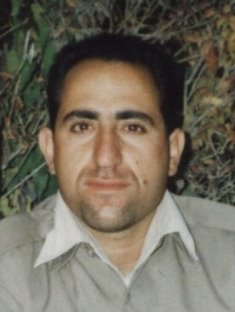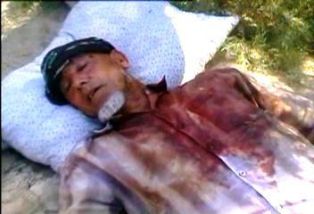
Amnesty International calls on the Iranian authorities to immediately stop the destruction of hundreds of individual and mass, unmarked graves in Khavaran, south Tehran, to ensure that the site is preserved and to initiate a forensic investigation at the site as part of a long-overdue thorough, independent and impartial investigation into mass executions which began in 1988, often referred to in Iran as the “prison massacres”. The organization fears that these actions of the Iranian authorities are aimed at destroying evidence of human rights violations and depriving the families of the victims of the 1988 killings of their right to truth, justice and reparation.
Reports indicate that between 9-16 January 2009, the numerous ad hoc grave markings made by the families of some of those executed in previous years were destroyed by bulldozer. The site was at least partially covered by soil and trees were planted.
Amnesty International additionally calls on the Iranian government to act on its standing invitation to UN mechanisms and to facilitate the visit to the country of the UN Special Rapporteur on extrajudicial, summary or arbitrary executions. In his visit he should be allowed to have an unhindered access to the Khavaran site with a view to indicating how best to conduct an investigation into the events of 1988, including in relation to the unmarked graves at Khavaran.
The Iranian authorities have the obligation to conduct an impartial investigation into the events and bring to justice those responsible for the “prison massacres” in fair proceedings and without recourse to the death penalty. Destruction of the site would impede any such future investigation and would violate the right of victims, including the families, to an effective remedy.
The Iranian authorities also have a responsibility to ensure that the body of anyone secretly buried who was not the victim of a crime is returned to his or her relatives. Destruction of the grave site would prevent this from happening and inflict further suffering on the families of the victims of the “prison massacres” who have been yearly commemorating the killing of their loved ones by gathering in Khavaran.
Background
Between August 1988 and February 1989, the Iranian authorities carried out a massive wave of executions of political prisoners – the largest since those carried out in the first and second year after the Iranian revolution in 1979.
In all, between 4,500 and 10,000 prisoners are believed to have been killed. Amnesty International has repeatedly called for those responsible for the “prison massacre” to be brought to justice in a fair trial without the death penalty.
For further information, see Iran: The 20th anniversary of 1988 "Prison Massacre", AI Index: MDE 13/118/2008, 19 August 2008,
http://www.amnesty.org/en/library/info/MDE13/118/2008/en , and Amnesty International’s report, Iran: Violations of human rights 1987-1990 (AI Index MDE 13/21/90).



























































1 comment:
dear friends,
khavaran is not only the site of the mass graves of the 1988 but also of the executed political prisoners of the early 1980s, whose families were given the coordinates of the graves by the Beheshte Zahra Directrate of Cemetries. Yes,we have to do something for that disastrous assault, but we should not dismiss the murders before 1988.
in solidarity
Post a Comment